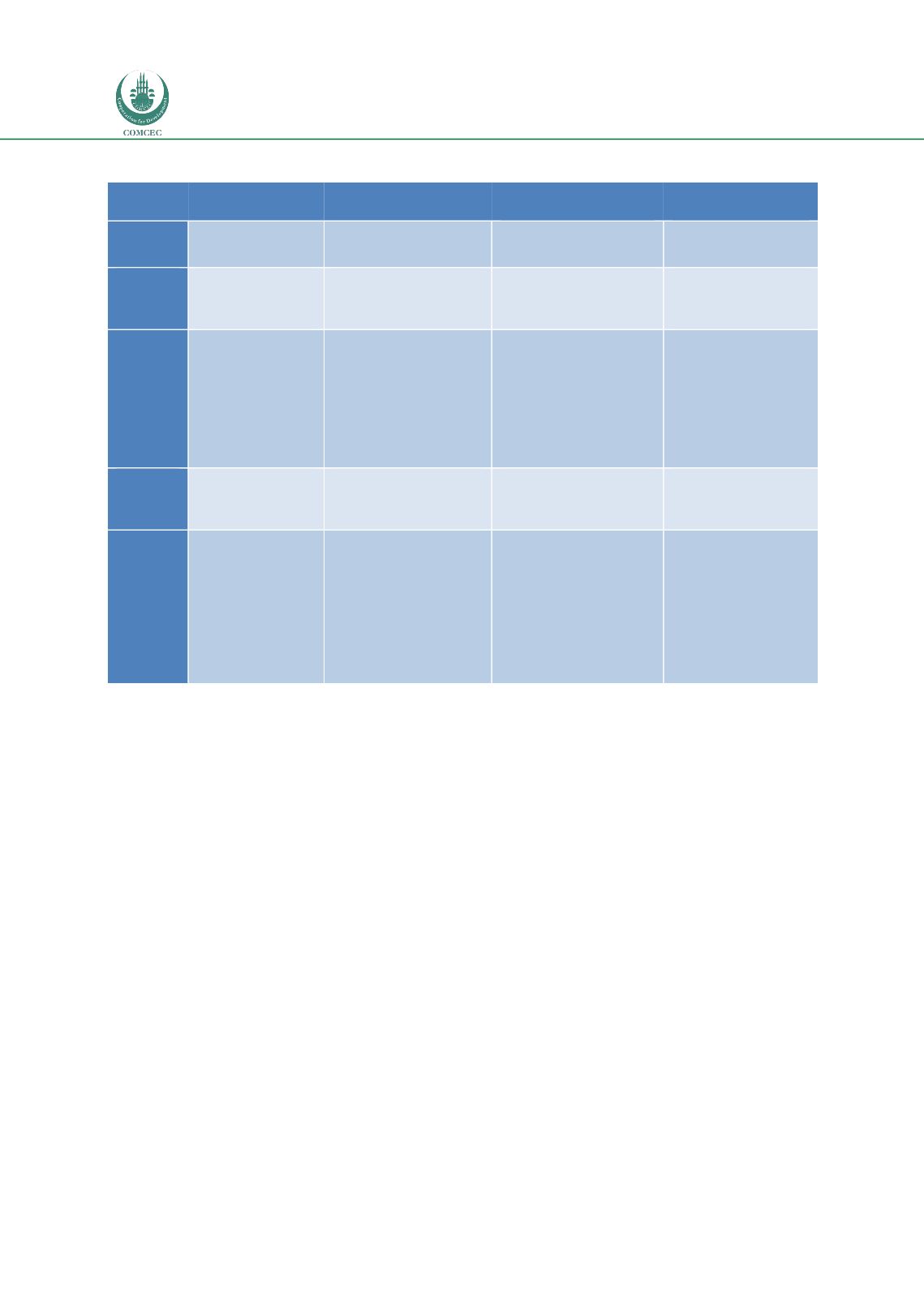

Reducing Postharvest Losses
In the OIC Member Countries
108
Table 49: Improved postharvest projects and practices for tomatoes in Bangladesh
Date
Organisation
Report title
Location and type of
training
Recommended
practices
2014-16
FAO Food Safety
project
Hortex Foundation
-
5 tomato producing
Upazilas
-
2015
Bangladesh
Agricultural
Research Council
(BARC)
A manual on postharvest
handling of tomatoes
N/A
Includes advice on
harvesting and handling
Recommends use of
ripening agents
2015
USAID/FTF (UC
Davis Postharvest
Technology Centre
Feed the Future
Agricultural Value Chains
program
1-week training for 30
trainers, consultants, and
other industry leaders in
agriculture and food
companies who wanted to
learn how to reduce food
losses and improve food
quality across the value
chain
Grading
Water loss
Packaging – use of
plastic crates
Cooling (use of Cool Bot
cooling system)
Solar drying Needs-
based extension
2016
AVRDC /USAID
Postharvest
Program
Establishing and managing
smallholder vegetable
packhouses to link farms
and markets
Mymensingh
Solar drying; processing
Good harvesting
practice; processing of
gluts
2016
FAO (Regional
project) with BARI
Dr Elda Esguerela,
UPLB; Dr Atique
Rahman and Dr
Madan Gopal Saha,
BARI
Postharvest losses on
tomatoes and mangoes
Bogra district
Value chain loss
assessment and training to
farmers and traders on
reducing losses
Big losses of tomatoes
(squashing leading to
rotting) due to use of
jute bags for transport.
Recommended use of
plastic creates by
farmers, sorting;
spreading planting and
use of early maturing
varieties
One stakeholder attributed the problem of postharvest losses to the focus of the Department of
Agricultural Extension (DAE) on increasing production: “We [DAE] imparted training and
provided advices to the farmers and supplied necessary agro-inputs timely which played a
vital role in increasing the production” (The Daily Observer, 19.11.2015) but not giving enough
attention to postharvest aspects, food safety and marketing. The Department of Agricultural
Marketing (DAM) has worked on getting policy makers recognise the role of marketing but the
department is very poorly staffed and price data collection, published online every day, is its
main function. This information is not very accessible to farmers but it is used by traders. To
address this the DAM has a pilot project to install electronic display boards at 3three to four
major markets (there are 13,000 markets in the country). Group marketing is being promoted
and there are now some 2,000 farmer marketing groups often supported by projects though
principles of groups marketing and appreciation of the benefits are not always understood.
The DAM lacks coordination with the DAE (although they sit in the same building) but the ideal
solution would be for the two departments together so that agronomic advice is provided
hand-in-hand with postharvest and marketing advice, including calculation of production costs
and prices. Ideally these services would be available at Upazila level. The DAM is developing
produce collection centres which combine assembly points with marketing infrastructure and
cold storage.
















